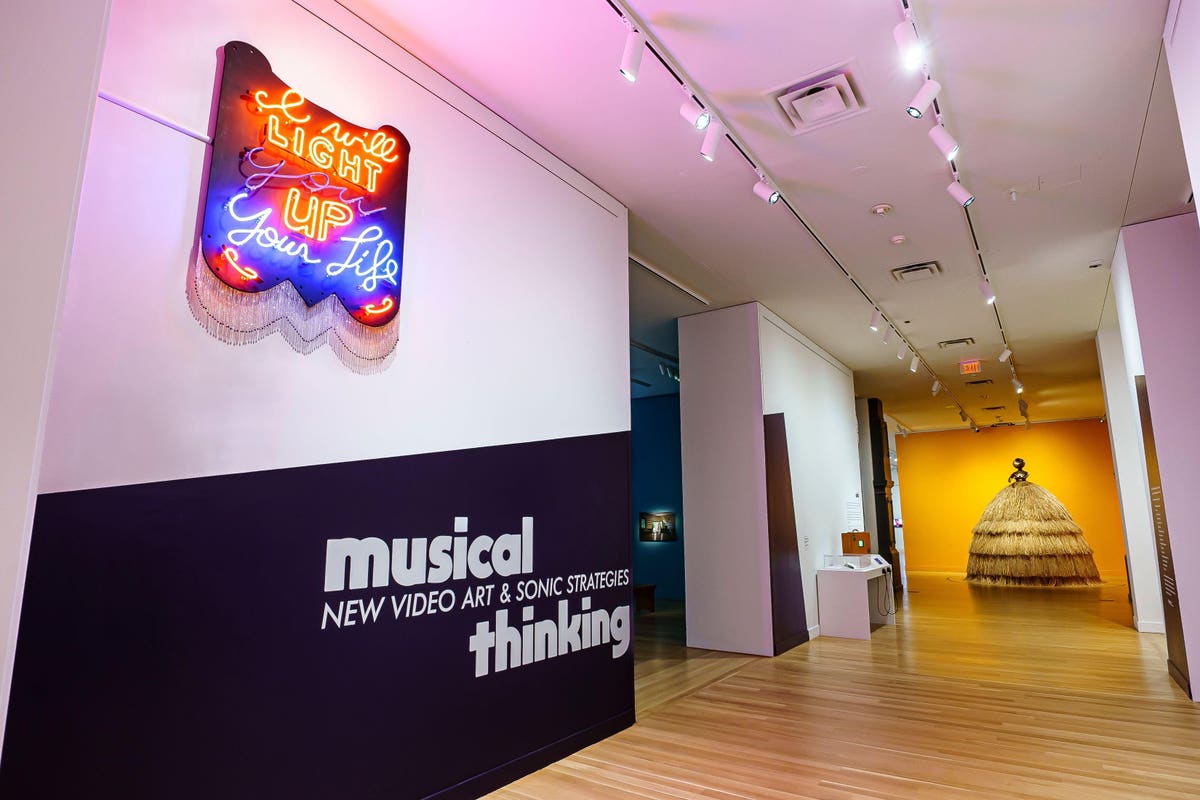In a press release issued in mid-June, the Smithsonian American Art Museum (henceforth abbreviated as “SAAM”) announced a new exhibit called Musical Thinking: New Video Art and Sonic Strategies. The exhibit is described by the museum as “[exploring] the powerful resonances between recent video art and popular music through 29 powerful artworks by 10 of today’s leading contemporary artists.”
Musical Thinking opened a few weeks ago, on June 23, and runs through January 29 of next year. The SAAM said the exhibition was organized by the museum’s curator of time-based media, Saisha Grayson, with support from curatorial assistant Anne Hyland.
The SAAM posted video on the exhibit to its YouTube channel.
“Music is often a way of establishing common ground; it is woven into our daily lives, our everyday spaces, and our stories of ourselves and our communities,” Grayson said in a statement included in the press release. “This is why SAAM’s first time-based media exhibition since 2015 is organized around this theme. The artists featured in ‘Musical Thinking’ use music to amplify aspects of American life and to take on vast swaths of history and to interrogate the country’s foundational constructs. The exhibition becomes an invitation to consider the relationship between the country’s past, present and future though this sonic frame.”
Grayson wrote a blog post about the ideas behind Musical Thinking.
Of particular note from a disability perspective, the SAAM worked closely with its Washington DC neighbors in Gallaudet University’s Motion Light Lab in developing the exhibit. According to the museum, Musical Thinking is “a fully accessible exhibition with an inclusive design that emphasizes the multisensory and social aspects of music with soundscapes that wrap around the space.” The so-called “layered experiences” were designed to be inclusive of the Deaf and hard-of-hearing communities, with haptic-enhanced benches in galleries intended to allow those with limited-to-no hearing experience the sonic vibrations of the audio. In addition, there are light-up, haptic dance floors designed in collaboration with performance artist Gutierrez that the Smithsonian says “encourages audiences to feel, see and participate in the experience she creates in her work ‘Clubbing.’” Elsewhere, there are audio notes on the walls, open captions, a QR code for accessing ASL versions of interpretive text and videos, and image descriptions of sections for people who use screen readers. Finally, there are sensory maps located at every museum entrance meant to guide visitors who have varying sensitivities to certain lights, sounds, and movements.
The SAAM has an accessibility guide to Musical Thinking on its website.
Read the full article here





